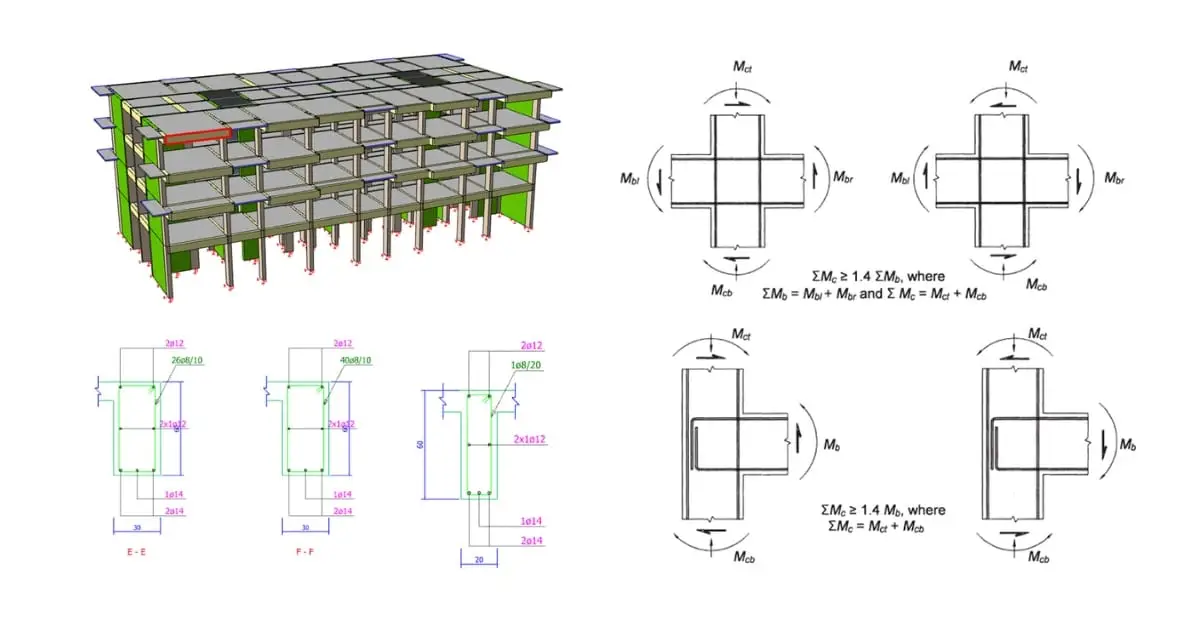
A Comprehensive Guide to Strong Column-Weak Beam Checks for Seismic Resilience in India
Understanding Strong Column-Weak Beam Concept :
The strong column-weak beam concept is a cornerstone of structural engineering. This principle emphasizes controlling lateral loads, especially those caused by seismic events, in a deliberate manner. It dictates that vertical load-bearing elements, such as columns, must have greater strength and stiffness than horizontal elements like beams. This approach safeguards structures against failure modes that could compromise stability during earthquakes.
Why Strong Column-Weak Beam Checks Matter:
Strong column-weak beam checks are crucial during seismic events. Earthquakes exert lateral forces that cause structures to sway. If beams are stronger than columns, they may withstand seismic forces more effectively than intended. This imbalance could lead to uneven stress distribution, shear failures, or beam hinges. Such vulnerabilities increase the risk of partial or total structural collapse. By ensuring columns are stronger, structures maintain their integrity under seismic loads.
Ductility and Energy Dissipation:
The concept also emphasizes ductility. Ductility refers to a material’s ability to deform plastically before failing. In structural terms, this means beams can yield and absorb energy during earthquakes. Controlled plastic deformation allows energy dissipation, enhancing resilience. This process also acts as an early warning system, enabling timely interventions and repairs.
Reduction of Soft Story Failures:
Adhering to the strong column-weak beam principle reduces “soft story failures.” These failures occur when a story’s lateral stiffness is much lower than adjacent stories. This causes large interstory drifts, often worsened by the absence of masonry infill walls. Such irregularities can lead to severe damage or collapse. By using robust columns, shear walls, or reducing story heights, engineers minimize these risks and improve structural stability.
Implementation and Design Considerations:
Engineers must consider the following for effective implementation:
- Material Properties: Choose materials with known strength and ductility for desired seismic behavior.
- Load Distribution: Ensure loads transfer from floors to beams and columns without excessive localized stresses.
- Connection Details: Strengthen connections between columns and beams to ensure smooth load transfer and prevent weak points.
- Seismic Codes: Follow local seismic codes to design structures capable of withstanding regional seismic forces.
The ProtaStructure Design Guide:
Guiding Excellence:
The ProtaStructure Design Guide provides detailed insights into IS 1893-2016 Annex F requirements. It includes example calculations to ensure compliance with strong column-weak beam checks. Using this guide, engineers can enhance structural designs and ensure better safety.
Start a free trial of ProtaStructure today to simplify strong column-weak beam checks with just one click.
Webinar for Indian Structural Engineers:
In our webinar, Mustafa Tan, Product Manager, and Nigel Watts, Asia Managing Director, discussed Indian Code support in ProtaStructure. They demonstrated how ProtaStructure transforms workflows for structural engineering projects.
Limited-time offer: Enjoy a 20% Discount on ProtaStructure until the 2024 Release!
Anchoring Resilience in Sound Engineering:
The strong column-weak beam concept is a foundation of structural resilience in seismic regions. Stronger columns and controlled yielding in beams enhance a structure’s survival during earthquakes. By applying this principle and adhering to seismic codes, structural engineers create safer environments for communities. These efforts reflect a commitment to architectural integrity and innovation, elevating structural excellence one beam at a time.









